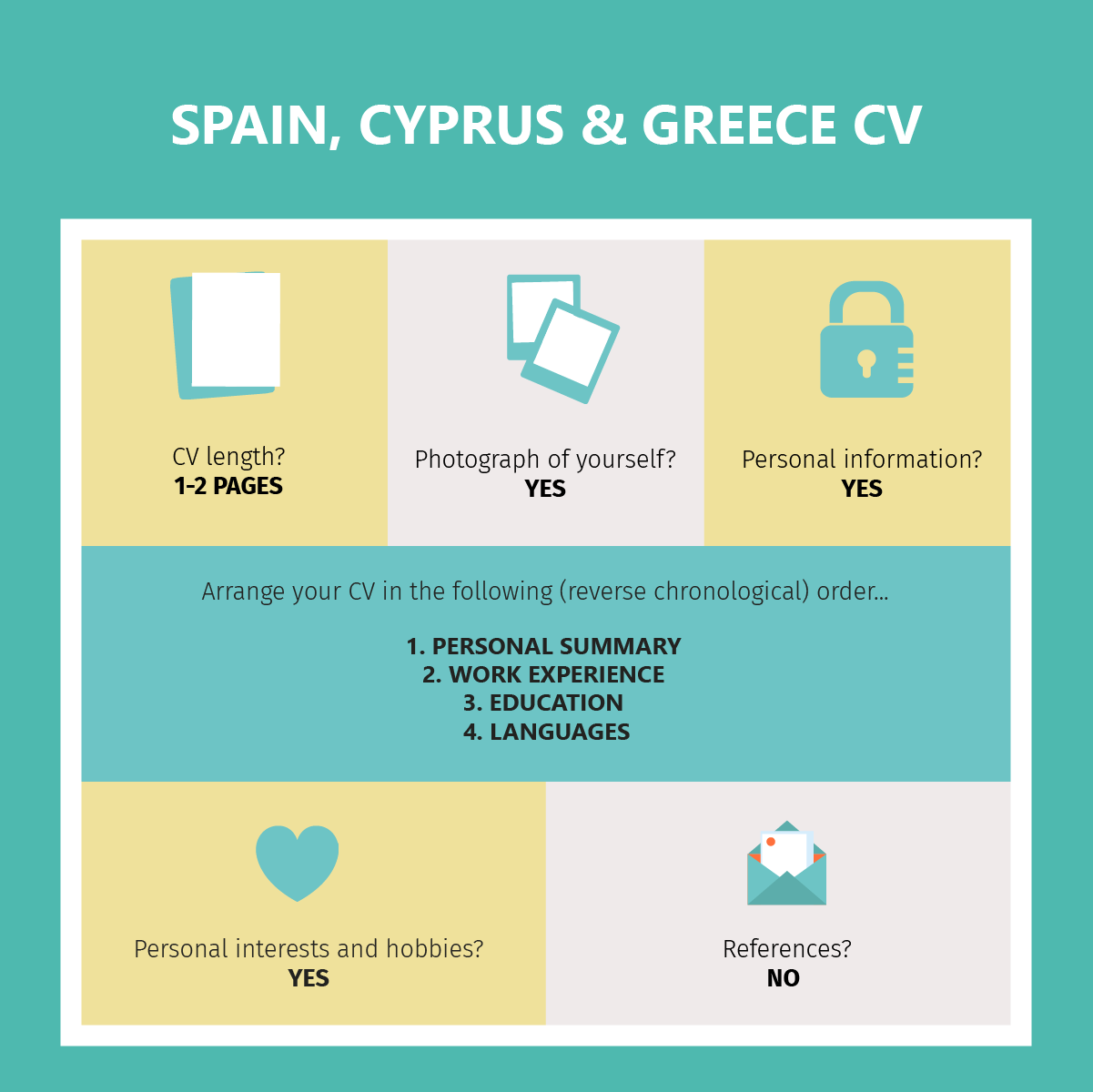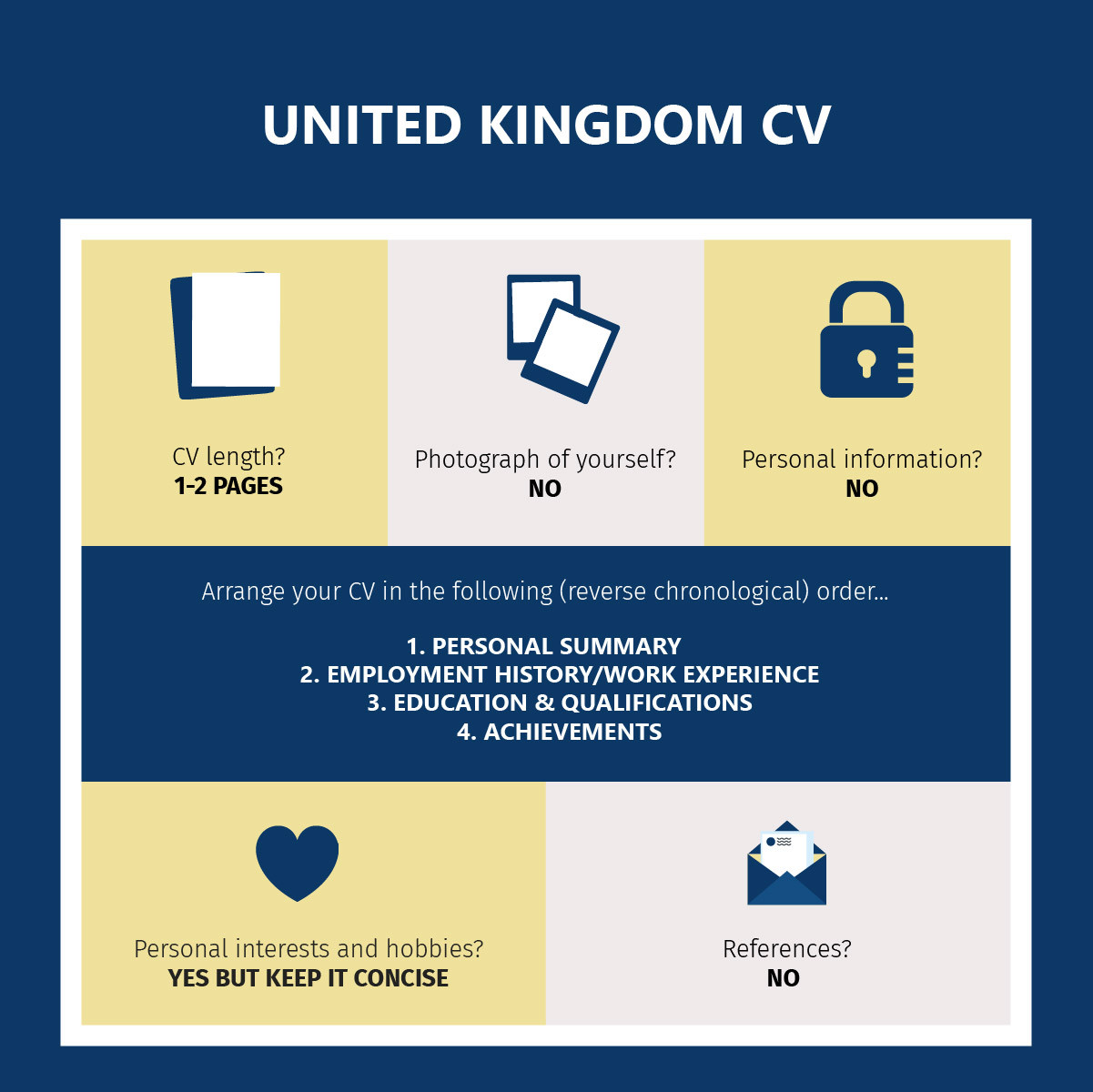Are you ready to move to another country with your German language skills but you don’t know where to begin? Well, first things first, in order to find a job abroad, you need to prepare a winning CV. A CV that will grab the attention of a recruiter in the country that you want to work in. Don’t worry, we know that this information isn’t always easy to find, which is why we want to share our expert knowledge with you.
Preparing your CV can seem like a particularly time-consuming task, especially for different countries and job positions, but it’s crucial to dedicate time and effort into this stage of your job search process to ensure that your CV will be seen by the right people.
Different countries, different styles.
In every country, recruiters and HR managers have their own preferences and expectations when it comes to the structure and style of a CV. They want to open a CV and see a widely recognised CV style rather than something that looks unfamiliar and unorganised. So, first things first, let’s adapt your German CV to other countries in Europe.
Creating a generic European-style CV may seem like the easiest and best option but in order to really catch the attention of your dream employers, you need to tailor your CV to each individual job opportunity, company and of course, the country where the job is based.
The German Style
.png)
As a German speaker, you are probably most familiar with this CV structure and style, The Lebenslauf. This is a style of CV that is most accepted within Holland, Germany and Belgium. Compared to other countries this CV is a lot less detailed and more of a Ìfact sheet’ style, outlining your education, your skills and other achievements rather than your personal interests and hobbies.
-
CV length? 1-2 pages Fact-Sheet Style split into 2 columns
-
Include a photograph of yourself? Yes, a passport-style photograph.
-
Include personal information? Yes - Date and Place of Birth and Marital Status, Address, Contact details etc.
-
Arrange your CV in the following (reverse chronological) order…
1. Short Personal Summary – Kurzprofil
2. Education - Ausbildung
3. Work Experience - berufliche Erfahrung
4. Other achievements - Sonstiges
-
Include your personal interests and hobbies? No, this is seen as egotistical and irrelevant
-
Include References? No, this is seen as very unusual. German HR departments usually receive written letters from past or current employers when they hire a new candidate.
Other styles and formats
Although other European countries CV style and format don’t differ much from the standards within Germany, Holland and Belgium, it’s time to begin your job search preparation by discovering what is expected from other European countries in terms of the length, structure and what to include etc. Different countries require different information for various reasons, use our guide to help you prepare the best CV for your job search!
Portugal CV style
.png)
First up, the Portuguese CV style and structure. If you are looking for a job in Portugal, this is the CV format that is widely accepted. Compared to other countries, Portuguese employers tend to be less strict about the length of your CV and accept a CV length of around 2-3 pages but just like other countries, you can submit 1-2 pages.
-
CV length? From1-3 pages, the CV length in Portugal is generally longer than in other European countries.
-
Include a photograph of yourself? Yes, include a professional passport-style photograph.
-
Include personal information? (informação pessoal) Yes, it's common to include a lot of personal information - Date and Place of Birth, Marital Status, Address, Contact details etc.
-
Arrange your CV in the following (reverse chronological) order…
1. Personal Summary
2. Work Experience
3. Education
4. Languages
5. Other skills and achievements
-
Include your personal interests and hobbies? Yes, it’s important to keep your CV related to the role.
-
Include References? No, you can leave these off the CV until they are requested, you can simply write at the end of the CV - "References available upon request."
United Kingdom - CV style
The United Kingdom CV style and format differs the most from other European countries. There are strict rules in place about recruitment discrimination, avoid including any photographs and personal information such as marital status, age, nationality etc. Recruiters will discard your CV if you include this information.
-
CV length? 1-2 pages
-
Include a photograph of yourself? No, this is seen as discriminative.
-
Include personal information? No, just contact details such as full name, contact number, email address.
-
Arrange your CV in the following (reverse chronological) order…
1. Personal summary
2. Employment History/Work Experience
3. Education & Qualifications
4. Achievements
-
Include your personal interests and hobbies? Yes, but keep it concise. It helps companies to determine whether you are a good cultural fit.
-
Include References? No, just state that they are “Available upon request”.
Spain, Cyprus & Greece - CV style

If you are looking for a job in Spain, Cyprus or Greece, this is the CV style that is generally accepted. They use a CV format that is accepted around most of Europe.
-
CV length? 1-2 pages, usually in a bullet point format, divided into key sections.
-
Include a photograph of yourself? Yes, a professional passport-style photograph.
-
Include personal information? Yes - Date and Place of Birth, Address, Contact details etc.
-
Arrange your CV in the following (reverse chronological) order…
1. Personal Summary
2. Work Experience
3. Education
4. Languages
5. Other skills and achievements
-
Include your personal interests and hobbies? Yes, include some information about your hobbies, try to keep it related to the role.
-
Include References? No, you can leave these off the CV until they are requested, you can simply write at the end of the CV - "References available upon request."
Scandinavia: Norway, Sweden, Finland & Denmark

The following CV style and format is generally accepted in Norway, Sweden, Finland & Denmark.
-
CV length? 1-2 pages, short and concise, bullet points etc.
-
Include a photograph of yourself? Yes, professional, passport-style photography.
-
Include personal information? (Age/Exact Location) No Just include Name, address, contact details. It isn’t necessary to include other personal information.
-
Arrange your CV in the following (reverse chronological) order:
1. Summary
2. Employment History/Work Experience
3. Education & Qualifications
4. Languages
5. Personal Interests/Info
-
Include your personal interests and hobbies? Yes, they have a section dedicated to personal life.
-
Include references? No, Leave the contact details off your resume but state that they are “Available upon request” for Norway, Finland and Denmark but in Sweden, it is more common to include the name and number.
The language of your CV
When it comes to the language of your CV, you may be wondering whether you should write your CV in German or English or even the native language of the country you are applying in. One of the main clues is the language that the job vacancy is written in. For instance, you may be applying for a vacancy with the job title “German-speaking customer service agent” and the entire job advert is in English but within the ad, it specifies that you need to have fluent German and English language skills. The best advice would be to submit your CV in English and immediately outline in your summary that your a native German speaker.
Fortunately, some job adverts will state what language they would like you to submit your CV in, which helps a lot. On the other hand, if you are really not sure, check out the website of the company, their online communication and try to see what language they use the most. It’s also not a bad idea to just ask the contact person or the company who is responsible for the hiring process, although they won't always be able to respond, it's worth a try! To be safe - make sure you clarify your language skills!
As you can see, some countries have their own preferences when it comes to the structure and content of your CV. In order to boost your chances of employment, you need to adapt your CV accordingly to the countries standards. Before you send your CV to recruiters or hiring managers, we recommend completing some final checks on your CV, to ensure it is optimised for your chosen country. Complete your research and look over existing CV examples to see if your CV style and format is correct before you send your application. Good luck with your applications, and we hope you feel inspired to move abroad with your German language skills!







.png)

Alex Aponte11mo ago
Awesome thx
Awesome thx